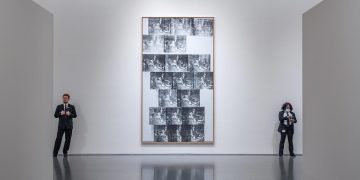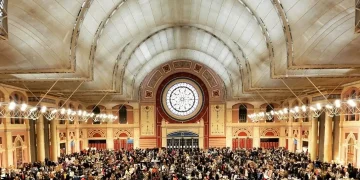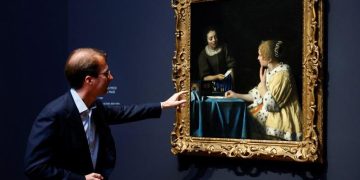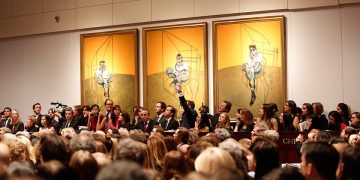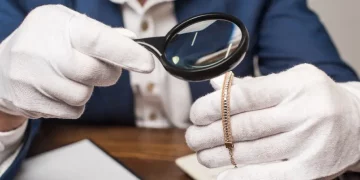In the ever-evolving world of collectibles, a new trend has emerged that has captured the attention of investors and collectors alike: early 20th-century niche artifacts. These seemingly obscure and forgotten items, once considered trivial or ordinary, are now commanding premium prices at auctions and private sales. What makes these artifacts so valuable? Why are global collectors, including billionaires and institutional investors, now fixated on these early 1900s curiosities?
Let’s explore the reasons behind this growing fascination and what’s driving the rush to acquire these rare treasures from a century ago.
1. Nostalgia and the Desire to Connect with the Past
One of the most powerful drivers behind the demand for 20th-century niche collectibles is nostalgia. Many of these items represent a simpler time, before the rapid advancements in technology and globalization. For collectors, owning an artifact from this period offers a tactile connection to the past, a direct link to a world that no longer exists.
Take, for example, vintage tin toys from the early 1900s. These toys, often made in Japan or Germany, were mass-produced but unique in their craftsmanship. For collectors, they represent a lost era of childhood innocence, before the rise of digital entertainment. As younger generations look to reconnect with a time they never knew, these toys—once dismissed as mass-produced junk—are now seen as tangible pieces of history, filled with emotional and sentimental value.
Similarly, objects like Art Deco furniture, vintage cameras, or old postcards have become prized for their craftsmanship and the nostalgic stories they tell about a rapidly changing world. These artifacts help collectors immerse themselves in a time period marked by cultural upheaval, the rise of modernism, and the dawn of mass production. In a world where people are increasingly seeking meaning and authenticity, these items represent a physical manifestation of the past, which is incredibly alluring.
2. Scarcity and the Appeal of Limited Availability
One of the key factors that makes 20th-century niche collectibles so valuable is scarcity. Many of these items were produced in limited quantities, and as time goes on, their availability becomes increasingly rare. Collectors understand that once these items are gone, they may never be seen again, which increases their perceived value.
For instance, vintage postcards from World War I or the interwar period are particularly scarce, as they were often mass-produced in small runs for personal correspondence but were not seen as long-term keepsakes. As a result, most of these postcards were discarded over time. The few that remain in good condition are now worth far more than anyone could have imagined back then.
Similarly, vintage clocks and mechanical watches from the early 20th century were produced in limited numbers by prestigious brands like Patek Philippe, Rolex, and Vacheron Constantin. Today, these timepieces are coveted by collectors who understand that the scarcity of well-preserved examples makes them an ideal investment.
The rarity of these items, paired with their historical significance, gives them a unique appeal in the world of collectibles, where scarcity often translates into higher demand and greater financial rewards.
3. Rising Global Wealth and the Hunt for Alternative Investments
As global wealth continues to grow, especially in emerging markets like China, India, and the Middle East, more individuals are looking for alternative investments to diversify their portfolios. In recent years, traditional financial markets have become more volatile, prompting investors to seek stability and value in other assets. Collectibles—especially those from niche categories—have become an increasingly popular choice.
In particular, rare 20th-century artifacts represent a tangible asset that can both appreciate in value and offer emotional satisfaction. As a result, high-net-worth individuals are flocking to auctions and private dealers to acquire items such as antique radios, vintage typewriters, or old-fashioned fountain pens. These objects, while not inherently valuable in the modern sense, are seen as both secure and enduring investments. Their value tends to grow steadily over time, often outperforming more traditional assets like stocks or bonds.
For investors in fast-growing markets, these collectibles are also an appealing way to show off wealth and differentiate themselves from their peers. Just like high-end art or vintage automobiles, owning rare 20th-century artifacts provides a sense of status and exclusivity—further boosting their appeal.
4. The Influence of Pop Culture and Media
Another factor contributing to the rise of 20th-century niche collectibles is the power of media and pop culture. Movies, documentaries, and TV shows often have a significant impact on the desirability of certain items. Over the last few years, period dramas, historical documentaries, and even video games have brought renewed attention to earlier decades of the 20th century, sparking interest in the artifacts of those times.
For example, the success of movies like The Great Gatsby (2013) and Downton Abbey (both the TV series and the films) has led to a resurgence in the popularity of Art Deco-style furniture, vintage jewelry, and even vintage fashion from the early 1900s. These films romanticize the era, turning previously overlooked objects into cultural symbols of luxury and refinement. As a result, collectors now seek to own pieces of this bygone era, which they see as embodying the glamor and sophistication portrayed in the media.
Additionally, auction houses have recognized the power of cultural trends and often capitalize on them by tailoring sales to coincide with the popularity of certain themes. Whether it’s a collection of vintage movie posters, typewriters, or historical artifacts, auction houses are expertly timing their events to capitalize on the growing interest driven by pop culture.

5. The Appeal of Craftsmanship and Authenticity
In a world dominated by mass production and fast fashion, many collectors are turning to items from the early 20th century because of their exceptional craftsmanship. These objects were often handmade or produced using time-honored techniques that have been lost in today’s industrial processes. Whether it’s a hand-stitched leather bag from the early 1900s or a hand-carved wooden toy, these items reflect a level of artistry that is no longer commonly found in modern production.
There’s also a significant demand for items that represent authenticity—objects that were not mass-produced for the masses, but rather created with care, attention, and a personal touch. This authenticity is particularly appealing to collectors who are tired of modern, mass-produced goods and want to acquire something that reflects a deeper sense of history and culture.
6. The Influence of Auction Houses and High-Profile Collectors
Auction houses like Sotheby’s, Christie’s, and Bonhams have played an instrumental role in bringing niche 20th-century artifacts into the spotlight. With the growing global interest in these items, auction houses are expertly curating sales that focus specifically on rare, unique pieces from this period. These auctions attract high-profile collectors and investors, pushing prices higher and driving further interest in these collectibles.
The influence of celebrity collectors and social media also cannot be ignored. As famous figures like Jay-Z, Kanye West, and David Beckham continue to make headlines for their interest in niche collectibles, their followers are increasingly looking to replicate their tastes. High-net-worth individuals see these items not only as investments but as symbols of their refined tastes, making them more eager to secure rare pieces for their personal collections.
Conclusion: A New Era of Collecting
The growing global fascination with 20th-century niche artifacts is not a passing trend—it’s the result of a powerful combination of nostalgia, scarcity, cultural influence, and economic factors. As collectors continue to seek deeper connections with the past, these once-forgotten objects are being elevated to new heights of value and importance.
For investors, these rare items offer a unique opportunity to diversify their portfolios with something both emotionally resonant and financially rewarding. Whether it’s a vintage camera, a pre-World War II toy, or an Art Deco mirror, these objects provide a window into the early 20th century—an era that continues to captivate us with its timeless beauty, craftsmanship, and authenticity.
In the world of collectibles, one thing is clear: the past is more valuable than ever, and the once-ignored treasures from the early 1900s are now the hottest investments in town.










